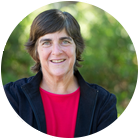Our community is dedicated to collaboration

I’ve been a faculty member in the Stanford School of Engineering for nearly 25 years, but since becoming Dean just a few months ago I’ve already had the opportunity to see the school from a different perspective. There are so many amazing things going on! I’ve been dedicating some of my time to meeting colleagues I didn’t know already, in the school and across the university. These discussions have made it clear that our community is dedicated to collaboration more than ever, bringing together faculty and students from a variety of backgrounds and perspectives to solve difficult challenges.
In fact, one of the most exciting developments of this past academic year has been the pilot launch of the Stanford Catalyst for Collaborative Solutions, an initiative arising directly from the SoE-Future planning process. Led by John Dabiri, a professor of mechanical engineering and of civil and environmental engineering, the Catalyst recently awarded substantial funding to three interdisciplinary teams assembling scholars from across the university to tackle issues related to medical diagnostics, sustainable oceans, and mental health.
Perhaps even more than the funded projects, a great success of the program has been fostering communication among a wide swath of faculty from every one of Stanford’s seven schools. Scholars participated in a series of oversubscribed Catalyst workshops facilitated by the Hasso Plattner Institute of Design (the d.school), culminating in a vibrant Catalyst symposium this spring. Thrilled to find others working on similar problems to their own but from different vantage points, participants cited a level of cross-disciplinary faculty exchange and mutual understanding they’d not experienced before at Stanford.
The Catalyst will further encourage these interactions through a series of events and workshops throughout the coming year, leading to another proposal competition and symposium in the spring of 2018. This integration of perspectives and scholarship is not only good for the researchers and the university, but ultimately for society as new relationships lead to new discoveries and advances in knowledge.
We are also pleased to see progress on improving diversity in the School of Engineering; doubling down on our efforts to increase the diversity of faculty and students was another strong SoE-Future recommendation. Last month at Commencement, 34% of the bachelor’s degrees in engineering were awarded to women, a higher percentage than at any time in the school’s history. Also, more than 25% of this year’s graduates were underrepresented minorities, reflecting the make-up of the undergraduates across the university.
We’ve made good progress in our graduate student population as well. The percentage of women matriculating in our graduate programs has been hovering in the 25-30% range. But in what we hope is a sign of things to come, 37% of this fall’s incoming graduate students will be female. The biggest strides come from our three biggest departments: Mechanical Engineering, Electrical Engineering, and Computer Science.
We are seeing gains on the faculty side as well. While the annual hiring season has not concluded yet, we look forward to welcoming at least four outstanding new female faculty.
We still have much work to do on this front, particularly in terms of recruiting graduate students and faculty from underrepresented minority populations. We will push forward with existing initiatives, while developing new programs to ensure we continue to attract, recruit, and retain the very best students and faculty. We all benefit when we bring together people from a variety of perspectives and backgrounds, and with your help and support we will continue do so.
Jennifer Widom
Frederick Emmons Terman Dean, Stanford School of Engineering
Fletcher Jones Professor in Computer Science and Electrical Engineering



